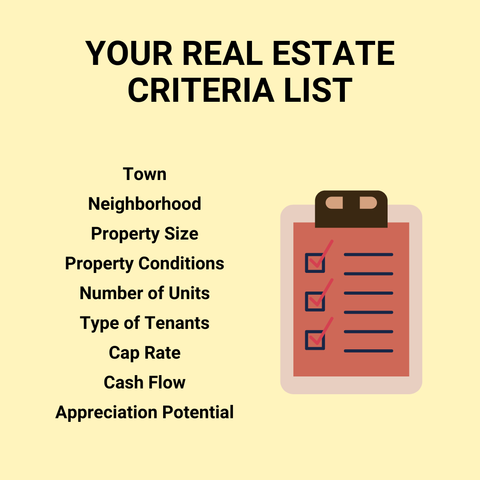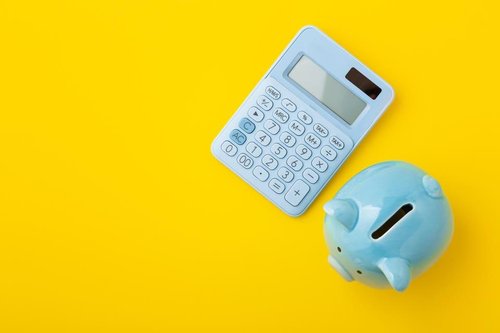Effective Debt Reduction Plan: Get Out of Debt Fast
Reading Time: 9 minutes
Are you tired of living paycheck to paycheck, with debt looming over you? Creating a debt reduction plan can be the first step towards financial freedom.
A well-structured financial planning strategy helps you understand your financial situation. It sets realistic goals and develops a clear path to becoming debt-free. By implementing a debt management program, you can gain control over your finances. This makes steady progress towards your goals possible.
Key Takeaways
- Understand the importance of creating a debt reduction plan to achieve financial stability.
- Learn how financial planning can help you set and achieve debt reduction goals.
- Discover the benefits of a debt management program in managing your debt.
- Take the first step towards creating a personalized debt reduction plan.
- Gain insights into how a well-structured financial plan can lead to long-term financial freedom.
Understanding the Basics of a Debt Reduction Plan
Creating a debt reduction plan is the first step to financial freedom. To manage your debt well, you need to know the basics of such a plan.
A debt reduction plan is a strategy made just for you. It helps you understand your finances, set goals, and pay off debt. It’s like a roadmap to becoming debt-free.
What is a Debt Reduction Plan?
A debt-reduction plan considers your income, expenses, debts, and goals. It assesses your finances, finds ways to improve, and sets a schedule to pay off debts. At its core, it’s about managing your debt well, focusing on what needs to be paid first.
Knowing your finances well lets you make smart money choices. This plan keeps you on track with your financial goals and helps you avoid spending too much.
Why Create a Debt Reduction Plan?
Having a debt reduction plan is key to financial stability. It reduces stress, saves on interest, and boosts your credit score. A good plan is essential for managing your money well and reaching your goals.
Some main benefits of a debt reduction plan are:
- Less financial stress and worry
- Lower interest payments and more savings
- A better credit score and reputation
- A clear view of your finances and goals
By sticking to a debt reduction plan, you can control your finances and move towards being debt-free. It’s a smart way to handle your debt and secure your financial future.
Assessing Your Financial Situation
Understanding your financial situation is key to making a debt reduction plan. You need to know your debts, income, and expenses.
Calculating Total Debt
To begin, calculate your total debt. Add up all your debts, like credit card balances and loans. Note each debt’s balance, interest rate, and minimum payment. This helps you see how much debt you have and where to start paying it off.
Evaluating Monthly Income and Expenses
Then, evaluate your monthly income and expenses. First, figure out your total monthly income. Next, list all your monthly bills, like rent and groceries. This helps you find ways to save money for debt repayment.
Identifying Essential and Non-Essential Expenses
It’s important to know the difference between essential and non-essential expenses. Essential expenses are things you must pay for, like rent and utilities. Non-essential expenses are things you can cut back on, like dining out. By knowing what you can cut back on, you can save more for debt.
Financial planning is essential here. By making a budget, you can see where your money goes. This budget will help you make smart choices about how to use your money.
Good budgeting is more than just tracking money. It’s about making choices that help you reach your financial goals. By spending wisely and cutting back, you can save more for debt.
Through debt assessment and financial planning, you’ll understand your finances better. This knowledge lets you make a debt plan that fits your needs and goals.
- List your debts and their details.
- Track your income and expenses.
- Identify areas for cost-cutting.
- Allocate surplus funds towards debt.
By following these steps and sticking to budgeting and financial planning, you can manage your finances better. This will help you make progress towards being debt-free.
Setting Achievable Debt Reduction Goals
To achieve financial freedom, you need to set realistic debt reduction goals. A good plan helps you reach these goals. Start by setting clear objectives that fit your financial situation.
For financial planning, it’s key to have both short-term and long-term goals. Short-term goals are for immediate needs, like paying off a credit card. Long-term goals are for bigger dreams, like saving for retirement. Knowing the difference helps you focus your efforts.
Short-term vs. Long-term Goals
Short-term goals are for things you want to do in a year or less. This could be paying off a credit card or building an emergency fund. Long-term goals, like paying off a mortgage or saving for retirement, take longer. Understanding these goals helps you plan better.
The SMART Goals Framework
The SMART goals framework helps make your goals clear and reachable. SMART means Specific, Measurable, Achievable, Relevant, and Time-bound. For example, “I will pay off $5,000 in credit card debt in 12 months by paying $417 each month” is a SMART goal.
Prioritizing Debts
When you have many debts, you need to decide which to pay off first. You might choose based on interest rates, balances, or urgency. For example, you might pay off high-interest debts first to save money, or focus on smaller balances to get quick wins.
Setting clear debt reduction goals and using the SMART framework helps you make a plan to be debt-free. This keeps you focused on your financial goals and improves your financial planning.
Exploring Debt Reduction Strategies
To get out of debt, you need to look at different debt reduction strategies that match your financial situation. Good debt management means knowing the various methods and picking the best one for you.
There are many ways to tackle debt, each with its own pros and cons. Knowing these can help you choose the right path for your debt reduction plan.
Snowball Method: Pay Off Small Debts First
The snowball method is about tackling your smallest debts first, no matter the interest rate. This method gives you a quick win as you clear smaller debts and see progress.
- List your debts from smallest to largest.
- Pay the minimum on all debts except the smallest.
- Put as much as possible towards the smallest debt until it’s paid off.
- Move to the next smallest debt and repeat.
Avalanche Method: Focus on High-Interest Debt
The avalanche method aims to pay off debts with the highest interest rates first. It might take longer to see results, but it can save you money on interest in the long run.
Identify your debts and their respective interest rates.Pay the minimum on all debts except the one with the highest interest rate.Put as much as possible towards the debt with the highest interest rate until it’s paid off.Move to the debt with the next highest interest rate and repeat.Debt Consolidation Options
Debt consolidation means combining multiple debts into one loan, often with a lower interest rate and one monthly payment. This can make managing your finances easier and might save you money.
Here are some debt consolidation options to consider:
- Balance transfer credit cards: Move high-interest debt to a card with a lower or 0% interest rate.
- Personal loans: Get a loan with a lower interest rate than your current debts.
- Debt consolidation programs: Work with a credit counselor to create a plan to pay off your debts.
By exploring and using these debt reduction strategies, you can create a solid plan to manage your debt and aim for financial freedom.
Creating Your Monthly Budget
Starting with a monthly budget is key to budgeting. It helps you manage your money better. This way, you can work towards paying off your debts.
Balancing Your Budget
A balanced budget is essential. It lets you use your money wisely for needs, debts, and savings. First, track all your money coming in and going out to understand your spending.
Once you know your income and expenses, sort them. Essential costs are things like rent and food. Non-essential costs are things like eating out.
Tips for Sticking to Your Budget
Staying on budget needs discipline and smart strategies. Here are some tips:
- Prioritize Needs Over Wants: Know the difference between needs and wants. Focus on essential costs first.
- Automate Savings and Debt Payments: Set up automatic transfers for savings and debt. This way, you won’t forget payments.
- Monitor Your Budget Regularly: Check your budget often. This helps you spot areas for improvement and make changes.
Tools and Apps for Budget Management
Today, managing your monthly budget is easier with many tools and apps. Some top picks are:
- Mint: A free app that tracks spending, creates budgets, and sets financial goals.
- You Need a Budget (YNAB): An app that assigns jobs to every dollar you earn.
- Personal Capital: A tool that tracks income and expenses and manages investments.
Using these tools and sticking to a budget can lead to financial stability. You’ll make good progress on your debt reduction goals.
Negotiating with Creditors
Managing debt well means talking to creditors. This step is key to reducing what you owe or getting better payment terms. Creditor negotiation is a big part of a solid plan to cut down debt.
Understanding Your Rights
You have rights when dealing with creditors, thanks to the Fair Debt Collection Practices Act (FDCPA). This law stops creditors from being too aggressive. Knowing these rights helps a lot when you talk to creditors.
Creditors can’t bother you at bad times or places. They must give you written details about the debt and who they are.
- Be aware of the statute of limitations on debt collection in your state.
- Know that you can request validation of the debt.
- Understand that you have the right to dispute the debt.
Tips for Successful Negotiation
To negotiate well with creditors, you need to be ready and keep trying. First, look at your finances and figure out a good offer. Talking to creditors early can help a lot. Debt management works better when you talk about your money situation early.
Prepare a detailed financial statement to present to your creditors.Propose a specific plan for paying off the debt.Be prepared to explain your financial hardship.When to Seek Professional Help
While you can talk to creditors yourself, sometimes you need help. If you have many debts or talks don’t work, think about getting a credit counselor or debt management company. They can help with financial planning and dealing with tough debt situations.
Talking to creditors is a big step in managing your debt. By knowing your rights, using good negotiation tactics, and knowing when to ask for help, you can move closer to your debt goals.
Exploring Additional Income Opportunities
To speed up your debt reduction journey, it’s key to look into additional income options. By having more income sources, you can put more money towards your debts. This helps you reach your financial goals quicker.
Good financial planning means managing your spending and finding ways to make more money. This two-pronged strategy can really help you cut down on debt.
Freelancing and Side Jobs
Freelancing and side jobs are flexible ways to earn extra cash. You can use your skills in writing, design, coding, or consulting to find freelance work. Sites like Upwork, Fiverr, and Freelancer can help you find clients.
- Find out what skills you can offer.
- Make a professional profile on freelancing sites.
- Start with good prices and build your portfolio.
Selling Unused Items
Selling things you don’t need can quickly give you cash. You can sell items on eBay, Craigslist, or Facebook Marketplace. You can also have a garage sale or sell to second-hand stores.
- Clear out your home to find items to sell.
- Take good photos of your items for online listings.
- Check the market value to price items right.
Passive Income Ideas
Passive income streams can give you ongoing money without much effort. Think about investing in dividend stocks, making and selling online courses, or renting out a spare room on Airbnb.
- Invest in stocks or real estate investment trusts (REITs).
- Make digital products, like ebooks or software.
- Try peer-to-peer lending platforms.
By using these strategies in your financial planning, you can move faster towards debt reduction. Remember, every extra dollar you make is one less dollar you owe.
Maintaining Financial Discipline
Financial discipline is key to reducing debt. It means making choices that help you reach your financial goals. By staying disciplined, you can stick to your debt plan and achieve financial stability.
First, it’s important to know what financial discipline means. It includes avoiding new debt, saving for emergencies, and developing good money habits. These steps are vital for managing your money well and working towards being debt-free.
Avoiding New Debt
When you’re trying to pay off debt, it’s important to avoid taking on more. This means being careful with credit cards and not getting new loans. Use cash or debit cards for shopping, and wait a bit before buying things you don’t really need.
Also, knowing the details of your current loans and credit agreements helps you avoid new debt. This way, you can focus on paying off what you already owe without adding more.
Building an Emergency Fund
Having an emergency fund is a big part of financial discipline. It helps cover unexpected costs and keeps you from going into debt. Try to save $1,000 or three to six months’ living expenses in a savings account you can easily get to.
To grow your emergency fund, set aside some money each month. You can make it automatic by transferring money from your checking account. This helps you save regularly without having to think about it.
Cultivating Healthy Financial Habits
Good financial habits are important for your long-term financial health. This includes making a budget, saving for retirement, and investing wisely. These habits help you manage your debt and build wealth over time.
To develop good financial habits, start by tracking where your money goes. Then, make a budget that covers all your expenses, savings, and debt repayment. Regularly check and adjust your budget to stay on track and make smart money choices.
In summary, financial discipline means avoiding new debt, saving for emergencies, and developing good money habits. By following these steps, you’ll be on your way to reducing your debt and securing a stable financial future. Good debt management and financial planning are essential for this journey, helping you prioritize your debts and make smart money decisions.
Regularly Reviewing Your Debt Reduction Progress
To reach your debt reduction goals, it’s key to check your progress often. This means tracking your steps, celebrating wins, and tweaking your plan as needed. This way, you can keep moving forward with your debt reduction progress and make smart financial choices.
Tracking Your Progress
Use a spreadsheet or a budgeting app to keep an eye on your debt reduction. It helps spot areas for improvement and lets you adjust your plan. Good financial planning means regularly checking your budget and tweaking it when necessary.
Celebrating Successes
It’s important to celebrate your achievements on this journey. Paying off a credit card or hitting a milestone is something to be proud of. Acknowledging your progress keeps you motivated and focused on your goal setting.
Adjusting Your Plan
When reviewing your progress, you might need to tweak your plan. This could mean changing your budget, talking to creditors, or finding new ways to earn money. Regularly reviewing and adjusting your plan helps you stay on track and reach your debt reduction goals.
#BudgetManagement #CreditCardDebt #DebtConsolidation #DebtReductionStrategies #DebtFreeLiving #FinancialFreedom #FinancialPlanning #MoneySavingTechniques #PersonalFinanceTips







